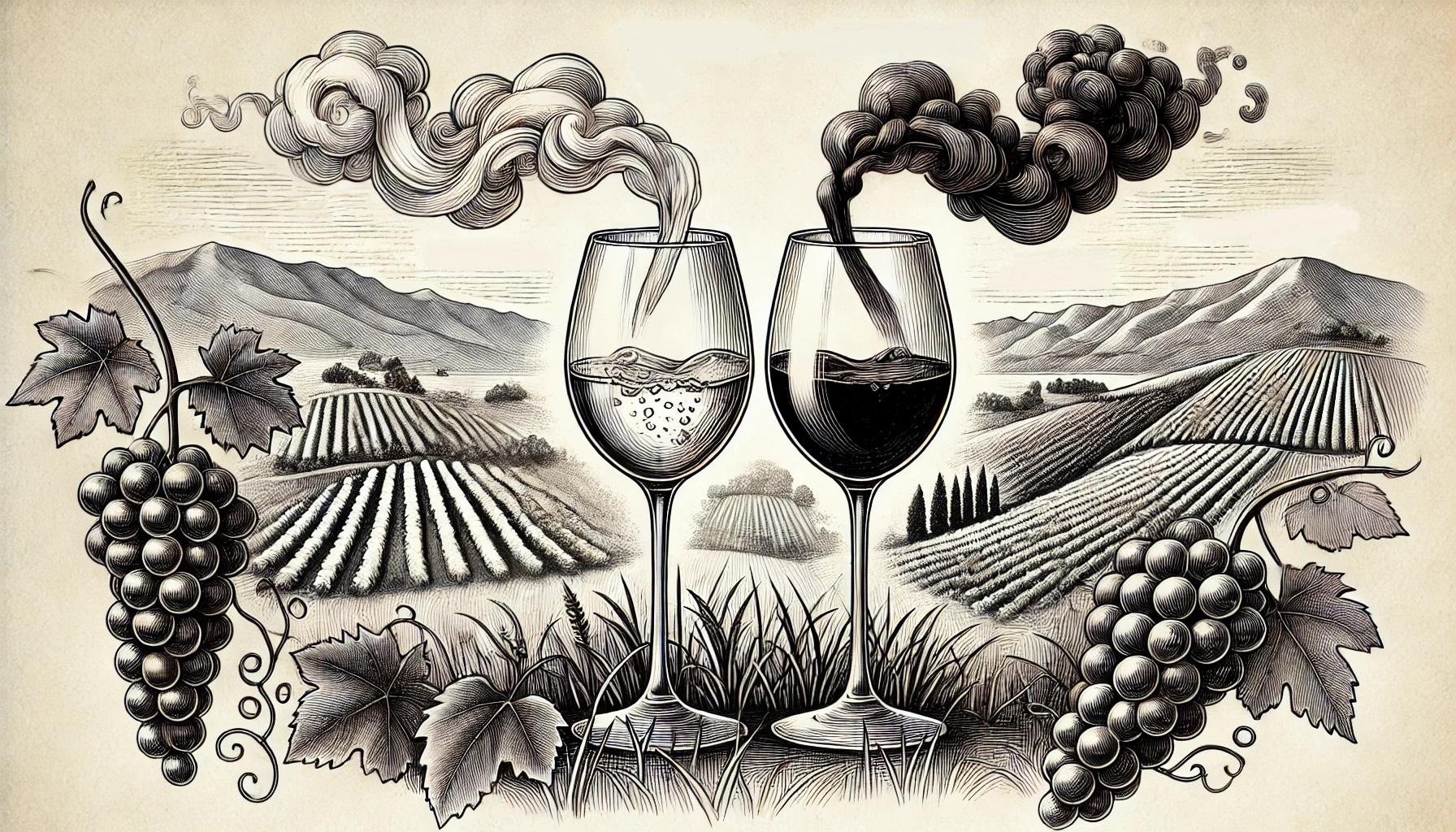
Aroma vs. bouquet – In wine terminology, aroma and bouquet both refer to the smell of wine but have slightly different meanings, particularly in how they are used to describe younger versus aged wines.
- Aroma: This term refers to the primary, fresh scents of a young wine that come directly from the grapes. These can include fruity, floral, or herbal notes. For example, a young Sauvignon Blanc may have aromas of freshly cut grass or citrus fruits. The term “aroma” is most often used for wines in their youth, where the grape’s natural scents are most prominent.
- Bouquet: Bouquet, on the other hand, describes the complex scents that develop in a wine as it ages and undergoes various chemical changes. This process happens particularly in wines that have been aged in oak or bottle for an extended period. The bouquet can include more layered notes like leather, tobacco, spices, or earthiness, depending on the wine’s aging process. For example, an aged Bordeaux might exhibit a bouquet of dried herbs, cedar, and old leather.
Understanding aroma vs. bouquet helps wine drinkers assess a wine’s age and complexity. In a young wine, you might focus on its bright, fruit-driven aromas, whereas, in an older wine, the bouquet is often the most compelling feature.
Curious about more wine terms and insights? Visit our Wine Wiki section and explore the basic wine terms for expert definitions and tips!
[…] The sight of a glass of wine, whether ruby red or golden yellow, can be visually appealing. The aroma, or bouquet, often reveals layers of fruit, spice, and earthiness. Tasting wine involves discerning its […]
[…] hint of citrus zest, all intertwined with floral undertones that give it a refreshing vibrancy. The aroma is both delicate and enticing, setting the stage for what’s to […]